Mercedes-Benz EQB review: a seven-seat EV that’s relatively affordable – and isn’t based on a van
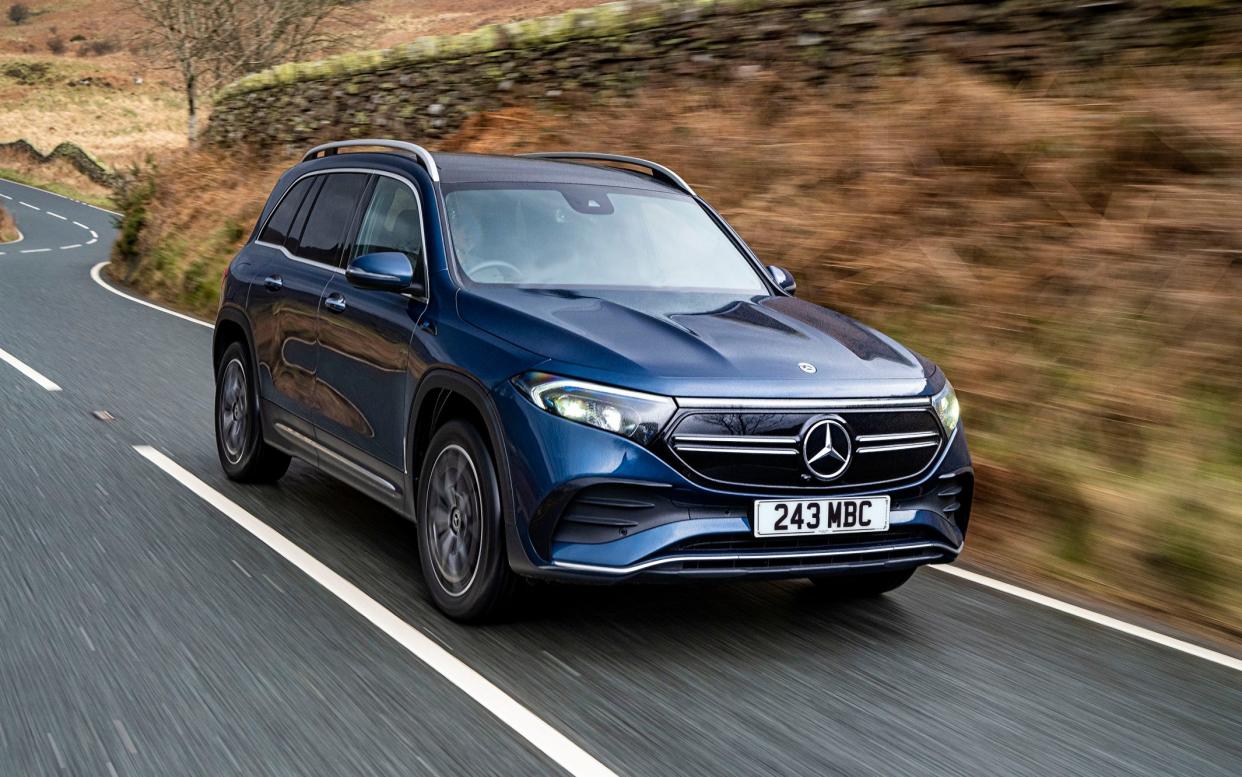
Until now, if you wanted a seven-seat electric car, your choices were limited, to say the least. You could splash out £83,000 or more on a Tesla Model X. Or you could take your pick of the small selection of electric van-based cars now being offered with seating for seven.
Thankfully, for those satisfied by neither option, there is now a third way. And, rather fittingly, it wears a three-pointed star on its nose.
It seems Mercedes launches a new electric car every other day at the moment; its increasingly comprehensive range stretches from the Smart EQ Fortwo, a tiny urban two-seater, up to the EQS luxury saloon which, at the time of writing, is the longest-range production EV on sale in the UK.
To this it has now added the EQB, an electric take on the seven-seat GLB SUV. Impressively, Mercedes has retained the full complement of seats in the conversion, making it, with the exception of a couple of thinly-disguised vans, the most affordable seven-seat electric car. So if you want to go electric, but need to move more than five people, you’re going to want to read this.
Pros
Smooth ride
Beautiful interior
Seating for seven…
Cons
…but only if they’re very small people
Expensive to buy
Sloppy handling
Cost of living
“Affordable”, of course, must be treated in relative terms in the context of an EV. They are not cheap at the best of times, and one with a Mercedes badge on its snout was always going to add a further premium to that already high price.
Despite that, the discovery that the EQB range starts at £53,610 will likely elicit a sharp intake of breath – this, let’s not forget, is still a car based on the underpinnings of the humble A-Class hatchback.
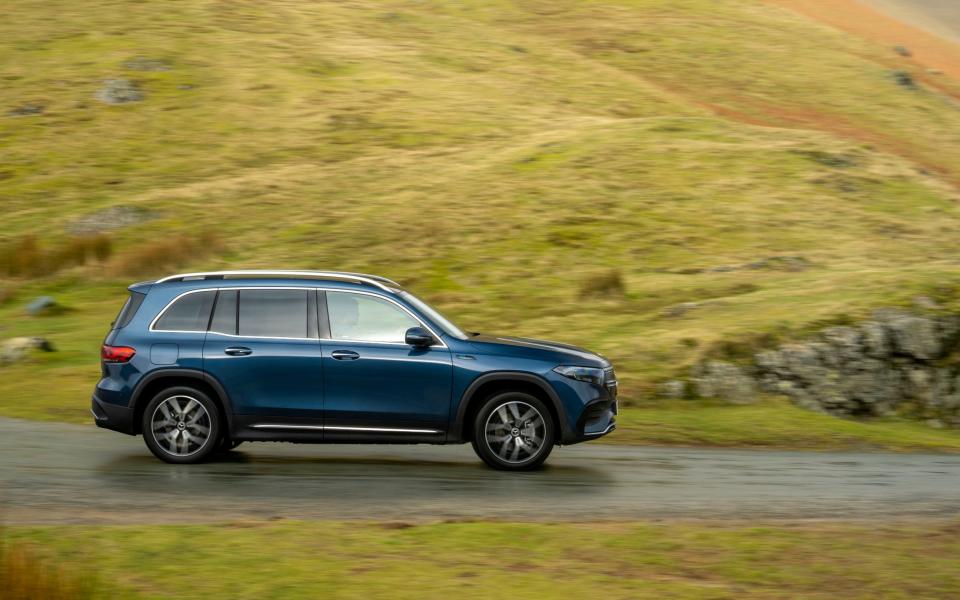
The top-of-the-line EQB 350 AMG Line Premium we’ve got here, meanwhile, will set you back closer to £60,000. So while it will incur less fiscal damage than a Model X, the gap is not quite as wide as you might at first imagine.
The 350 is the more potent of the two EQB models available with, slightly confusingly, 288bhp; the other is the 300, with 225bhp. (Get it? No, us neither.) Both share the same battery, with 66.5kWh of usable capacity, with an electric motor on each axle, making the EQB four-wheel drive.
Its energy efficiency is roughly on a par with the BMW iX3 at 3.3 miles per kilowatt hour (mpkWh), but a little way off the 3.8mpkWh a Kia EV6 can achieve. That means the EQB’s official range is 257 miles. Versus 285 miles for the BMW and up to 328 for the Kia, that’s a relatively unexceptional – one might even go as far as to say disappointing – figure, given the price. In real-world conditions, that means you can expect anywhere between 180 and 210 miles, depending on the weather.
DC charging, meanwhile, can be carried out at up to 100kW, providing you can find a suitable charger, and that means 10-80 per cent charges will take as little as 33 minutes. That’s not bad, but when the aforementioned EV6 (and, for that matter, the similar Genesis GV60) can charge at 350kW for much less money, it does feel a little sluggish.
Size matters
Neither of those rivals has seven seats, however. Although, on that front, Mercedes’s own press site points out that “the two seats in the third row can be used by people up to 5’4'' tall, and child seats can also be fitted there”. Read between the lines and you might infer that if you’re taller than that, you’re probably fresh out of luck.
In fact, in the flesh, I’d go as far as to say that even 5’4” adults will struggle. And even if you do manage to contort yourself into such a position as to fit and install a child seat through the small gap between the folded middle-row seats and the door jambs, it’ll take up so much space as to leave very little for all but the smallest of childrens’ knees.

To be fair, you can slide the middle row of seats forward to leave a sliver more leg room behind, but this creates its own problems. That’s because the floor of the EQB is so high that the seat bases are quite low down to it, which means even with the seats in their rearmost position you feel as though your knees are up around your chin. Rolling them forward only exacerbates this sensation.
So, do you prefer reasonable leg room in the second row, but none at all in the third, or would you rather a mediocre amount in both? Those are the choices the EQB offers you. It’s probably do-able if you have four kids to carry, but throw any adults into the mix and you’ll have to brave their moans of discomfort.

The boot, meanwhile, offers 495 litres of carrying capacity, which is reasonable for an EV of this size; of course, that figure shrinks considerably when the third row of seats is upright. Mercedes doesn’t offer a figure for its capacity in this configuration, but suffice it to say that your five back-seat passengers’ disappointment will be compounded when they realise they’re going to have to leave their bags behind.
Cabin fever
Mind you, if you’re sitting in the front and can ignore the wailing from behind, you’ll be enjoying yourself pretty well. The EQB is a pleasant place to be, especially in this all-bells-and-whistles form with its nightclub-esque ambient lighting and shimmering satin-finish metal inserts.
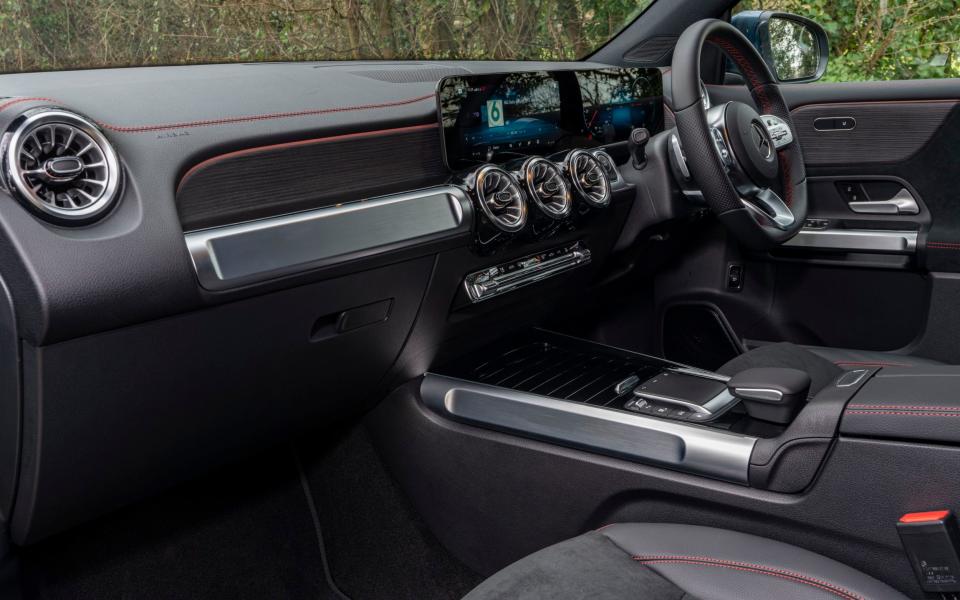
Much of the major switchgear is made of real metal, too,which gives it a lovely, tactile quality, and the fact that the EQB hasn’t yet succumbed to the industry trend of touch-sensitive steering wheel buttons, as have larger Mercs, is a relief.
The entertainment system is well resolved, too, with quick responses, smart graphics and sensible menu layouts; the screen itself is perhaps a little small by modern standards, but the fact that it’s still perfectly usable reminds us that size isn’t everything (though try making that suggestion to your rear-seat passengers at your peril).
On the road
This is a comfortable car once it’s on the road, too. The way it deals with bumps and lumps is quite impressive, in fact, smoothing over them gracefully and glossing over churned-up patches of rougher Tarmac.

If there’s a fault, it’s that there’s a slight background woodenness that causes an occasional pitching motion over certain bump frequencies, and now and then you even get a bit of side-to-side head toss – though this is only really where you encounter deep divots on one or other side of the car.
It’s mostly quiet and smooth on the motorway; there’s a little tyre roar, but nothing the radio won’t drown out. Around town, meanwhile, the EQB is really easy to drive: visibility is excellent, with the four corners very easy to judge thanks to its boxy profile. It’s also quick off the mark, while the weighting of the pedals is really good so you only fly off down the road if you really want to.
More haste, less speed
The brakes are similarly impressive; you don’t get any of the weird changes in feel or intensity through the pedal travel that you can do with some EVs – the threshold between friction and regenerative braking has been very well integrated.
So the EQB is pretty serene when you’re just pootling around, but when you press on a bit, it does start to go to pieces somewhat.
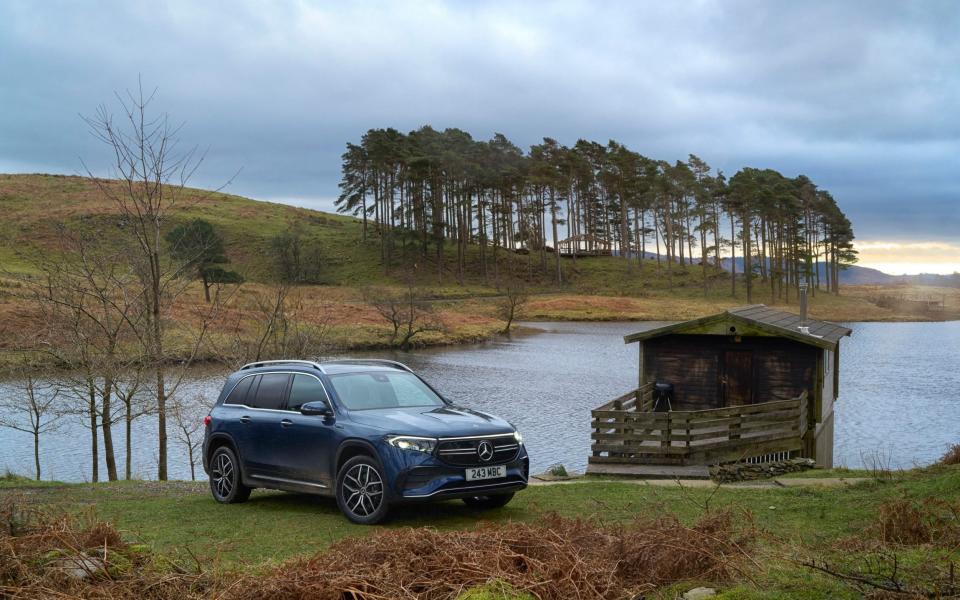
The problem is the soft suspension, which bestows upon the EQB its smooth ride, but doesn’t control its weight all that well. As a result, the car always feels top-heavy and leans over if you change direction with too much speed. And then if you add or back out of the throttle to try to change your line, the whole car wobbles, so you find yourself having to correct and then correct again.
Under power the EQB’s tendency is to push on ahead quite dramatically, so the electronics have a tough job keeping everything pointing the way you want it – you can feel the traction control preventing the wheels spinning and the torque vectoring braking each wheel to pull the nose back into line.
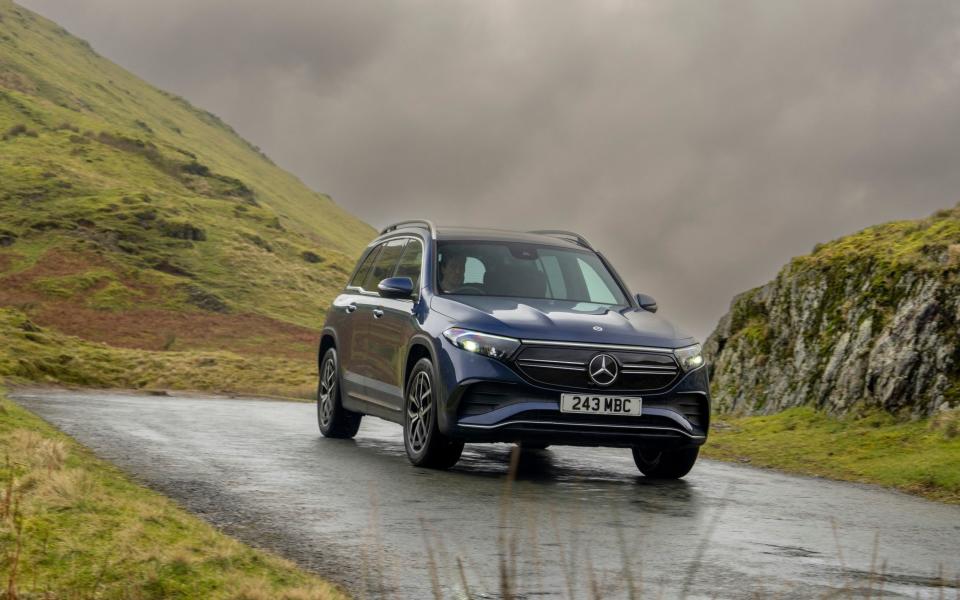
Add to this the fact there’s no weight or feedback to the steering, which feels very artificial, and you have no idea what’s going on beneath you, so you find yourself having to wait for the car to flounce its way into each corner before you can react and correct.
The Telegraph verdict
All this, of course, is somewhat (though not entirely) irrelevant in a family SUV, which is why you might be willing to forgive the EQB – especially in light of the fact that when you aren’t driving as though you’re being chased by passengers whose luggage you’ve left behind, the EQB is delightfully placid and peaceful.
Harder to overlook is the rather mediocre range – and, even more so, the space issue. Yes, you can fit seven people into the EQB, but only just. This, in other words, is not an electric replacement for a Land Rover Discovery Sport, let alone a Ford S-Max.
And when you consider how many brilliant five-seat EVs there are for considerably less cash – the Hyundai Ioniq 5, for one – suddenly this feels like a lot of money to pay purely for the privilege of a pair of extra seats that should only be thought of as occasional in the extreme.
The EQB is comfortable, classy and quiet, then – but it probably isn’t the affordable seven-seat electric SUV you might have been holding out for.
The facts
On test: Mercedes-Benz EQB350 4Matic AMG Line Premium
Body style: five-door SUV
On sale: now
How much? £58,110 on the road (range from £53,610)
How fast? 99mph, 0-62mph in 6.0sec
How economical? 3.3mpkWh (WLTP Combined)
Engine & gearbox: N/A
Electric powertrain: DC asynchronous motor with 66.5kWh battery (usable), 100kW on-board charger, CCS charging socket
Electric range: 257 miles
Maximum power/torque: 288bhp/273lb ft
CO2 emissions: 0g/km (tailpipe)
VED: £0
Warranty: 3 years / unlimited miles
Spare wheel as standard: No (not available)
The rivals
BMW iX3 M Sport
282bhp, 285 miles, £62,865 on the road
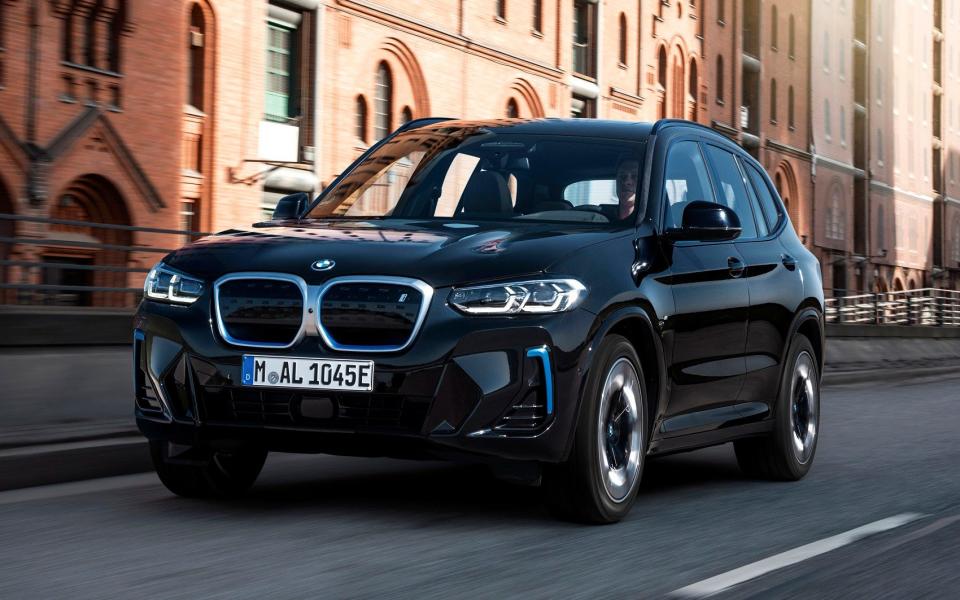
Frankly, unless you really need all seven seats, you might be better off with a bigger, more spacious five-seater like the iX3. Into the bargain, it’s just as well equipped, and comes with a greater electric range. It’s also much more crisp to drive than the EQB, so while it is more expensive, it still feels like a better way to spend the money than the Merc – if you can live without that third row.
Genesis GV60 Sport
314bhp, 292 miles, £53,605 on the road
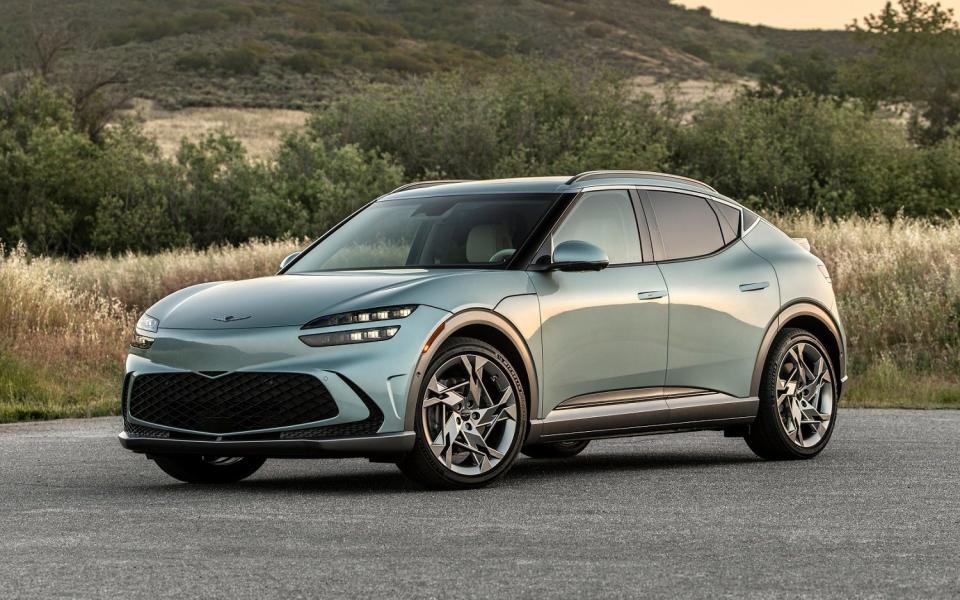
Again, the same caveat applies: the GV60 is only a five-seater, but if that isn’t an issue it too is a better all-rounder than the EQB – and much better value, too, with more range and more power for less cash. That’s without discussing Genesis’s excellent after sales package, which throws in five years’ warranty and five years’ free servicing with free collection and delivery throughout.
Citroen e-Berlingo XL XTR
134bhp, 168 miles, £32,995 on the road
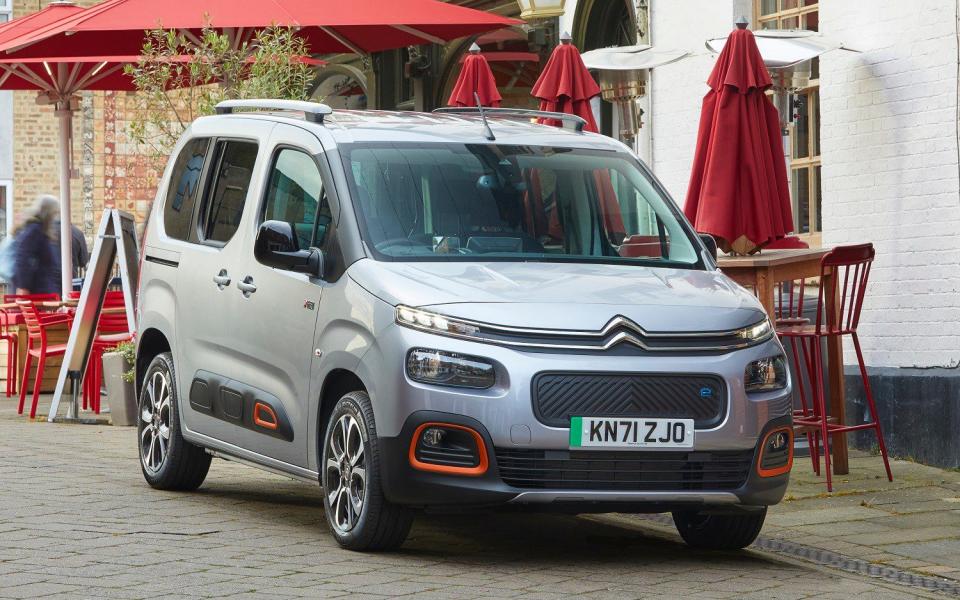
You may scoff at the very idea of listing a Citroen as a rival to a Mercedes, but this is probably the best of the electric seven-seat van cohort. Besides, the E-Berlingo is nearly half the EQB’s price – and it’s far from half the car. You get less power, fewer toys and a plasticky interior, but this is a much more useful seven-seater, with considerably more space, and it’s just as smooth-riding. Crucially, it’ll charge just as quickly as the EQB, too, so all you’ll need to overcome its shorter range is an occasional 15-minute zap-and-dash.
For new and used buying guides, tips and expert advice, visit our Advice section, or sign up to our newsletter here
To talk all things motoring with the Telegraph Cars team join the Telegraph Motoring Club Facebook group here

 Yahoo Movies
Yahoo Movies 
